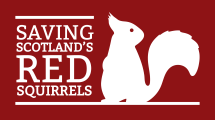…Overall responsibility for this policy and its implementation lies with the Scottish Wildlife Trust Chief Executive. Information Commissioner’s Office For further assistance with complaints regarding your data, please contact the Information Commissioner’s Office, whose remit covers the UK. Wycliffe House, Water Lane, Wilmslow SK9 5AF Telephone: 0303 123 1113 Email: casework@ico.org.uk 9. Leaving our website We are not responsible for… […]
Read More…
…pine forests of the Highlands. Under threat Red squirrel populations have seriously declined, with only an estimated 220,000 remaining in Scotland today. In some places they have not been seen for many years. The greatest threat to the red squirrel’s future in Scotland is the invasive non-native grey squirrel. Larger and more robust, grey squirrels out-compete red squirrels for… […]
Read More…
…can move and adapt. 30 by 30 – the plan to increase the area of land that is protected or managed for nature to 30% by 2030. Nature Targets – the plan to set legal targets for nature that the government has to meet. National Parks – the plan to designate at least one new National Park in Scotland by… […]
Read More…
…Wildlife Trust volunteer sign-up processes. Please email squirrels@scottishwildlifetrust.org.uk. Please note SSRS will no longer be able to provide any of the financial support that was available during the Developing Community Action and Transition phases. Fundraising guidance and support is available via the Resources page on the Hub, and through the Forum via the ‘Offers and Needs’ chart. Will SSRS… […]
Read More…
…• 3 elected office bearers – Chair, Secretary, Treasurer or equivalents; and • A bank account in the group’s name (or funds ring-fenced within the bank account of a local Community Initiative); • Or the group is operating under a local community trust, similar organisation, or other independent structure (i.e. as a Community Interest Company). Will my network need to… […]
Read More…
…the national strategy for red squirrel conservation in Scotland, based on the findings of the report and success of the SSRS programme to date. Full details of the successes of the project are outlined in the report. Key highlights of the Scottish public’s contributions to red squirrel conservation include: By the end of the DCA phase 18 volunteer led groups… […]
Read More…
…Saving Scotland’s Red Squirrel Project and I worked with this project for four years. In March I joined Trees for Life to work on the red squirrel reintroduction project. What are the main aims of the Trees for Life Red Squirrel Reintroduction project? The Scottish Highlands hold the largest remaining population of red squirrels in the UK. However, red… […]
Read More…
…with only around 287,000 remaining, about 80% of which are estimated to be in Scotland. The greatest threat to the red squirrel’s future in Scotland is the invasive non-native grey squirrel. First introduced in Victorian times, the larger and more robust grey squirrel out-competes reds for food and living space, making it difficult for them to successfully breed and for… […]
Read More…
…team and she also works closely with the Tayside Conservation Officer and Grey Squirrel Officers. Contact: ymcmurchie @scottishwildlifetrust.org.uk Katie Berry: Communications & Engagement Officer Katie began her squirrel journey as the SSRS Administrator, joining the team in March 2020, just before the first covid-19 lockdown. In November 2022 she became the Communications & Engagement Officer for the team,… […]
Read More…
…Scotland continues to provide a home for the bulk of the country’s red squirrels, which still occurs as the sole species of squirrel over highland Scotland. Happily, the sightings also show that the native species still occupies a large area in the south of Scotland, although here they share the landscape with grey squirrels. The largest concentration of squirrel reports… […]
Read More…
